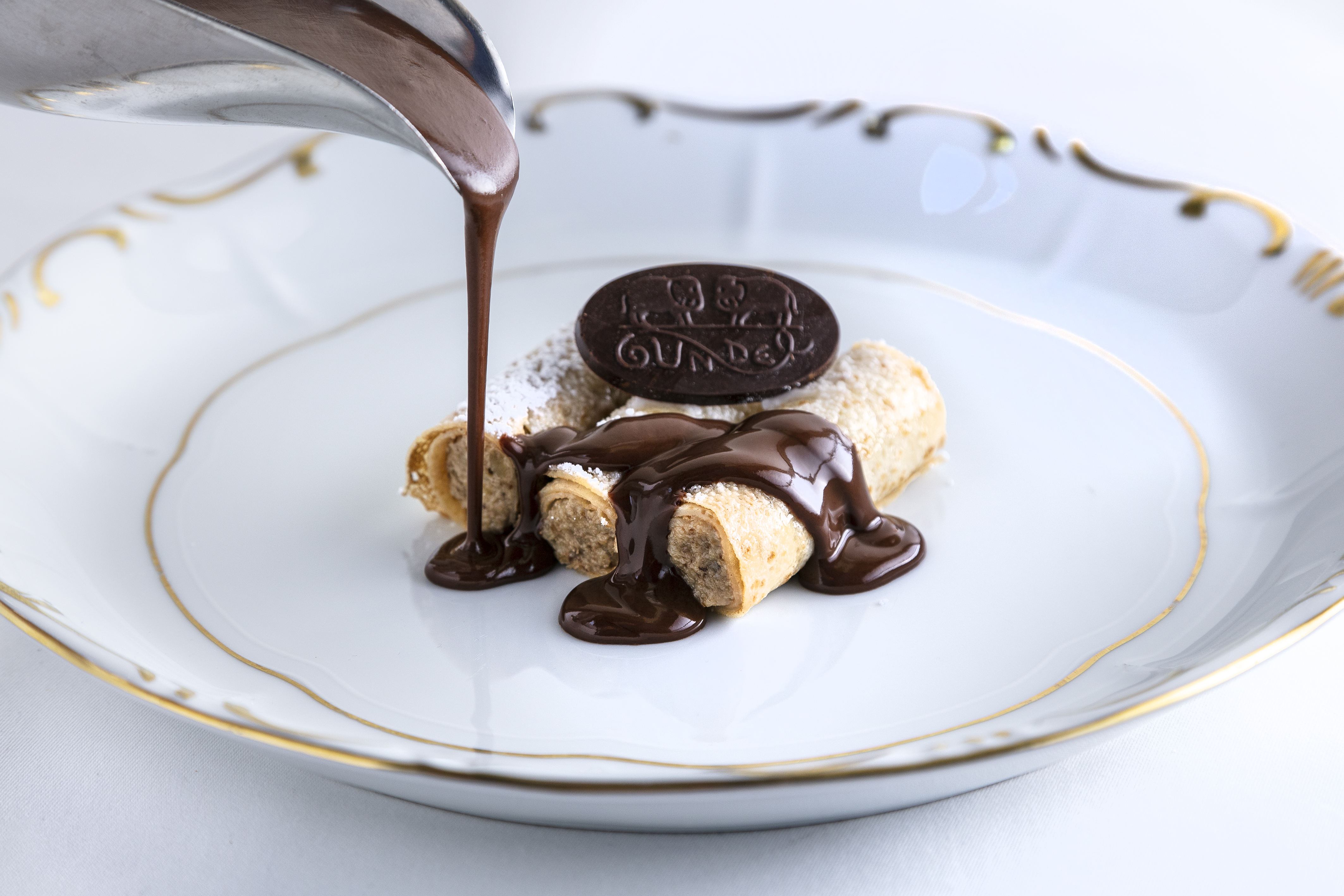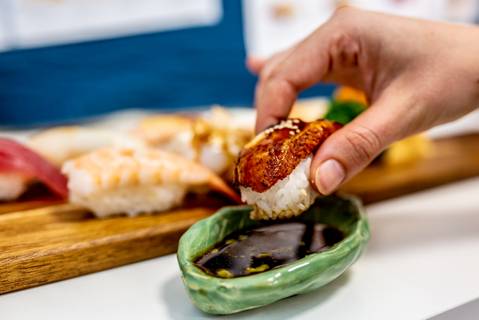The history of recipes is seldom easy to follow, so any researcher has to be on their toes to discover who created, say, the first chicken paprikash. Some recipes, however, we are sure of – usually because they’re tied to a great restaurant, chef or ruler. This has allowed us to compile this gastronomic selection of dishes almost certainly conceived in a Budapest kitchen. According to legend, at least.
There have always been several legends about Brassói aprópecsenye, Brasov roast. Many still believe this dish comes from Transylvania, Brasov being one of the centres of the Saxon community there, while others associate the food with the dining cars of the Brasov Express train, where it was prepared in several ways. The most believable is the testimony of Endre Papp, who came from a famous hospitality family and who was entrusted in the dark 1950s with managing the Mátyás Pince, once considered one of the best restaurants in Pest.
According to the story, during the years of post-war shortages, Papp once received 1,071 pork tails as the raw ingredients for him to feed guests over the course of one evening. The task was not easy, but Papp solved it: the whole kitchen carved pork tails and cooked the scrag ends with bacon, garlic and fresh green peas from Cluj.
Papp’s statement is refuted by András Cserna-Szabó in his book Transylvanian Feasts Revisited, as the dish, together with a full recipe, had already appeared in one of the 1942 issues of Ujság. However, since there is a good chance it’s a version of a Tokány dish from the Transylvanian kitchen, we can actually accept that the ancestor of Brasov roasts made today was invented by Papp. By the way, it has several variations, using other meat and even fish.
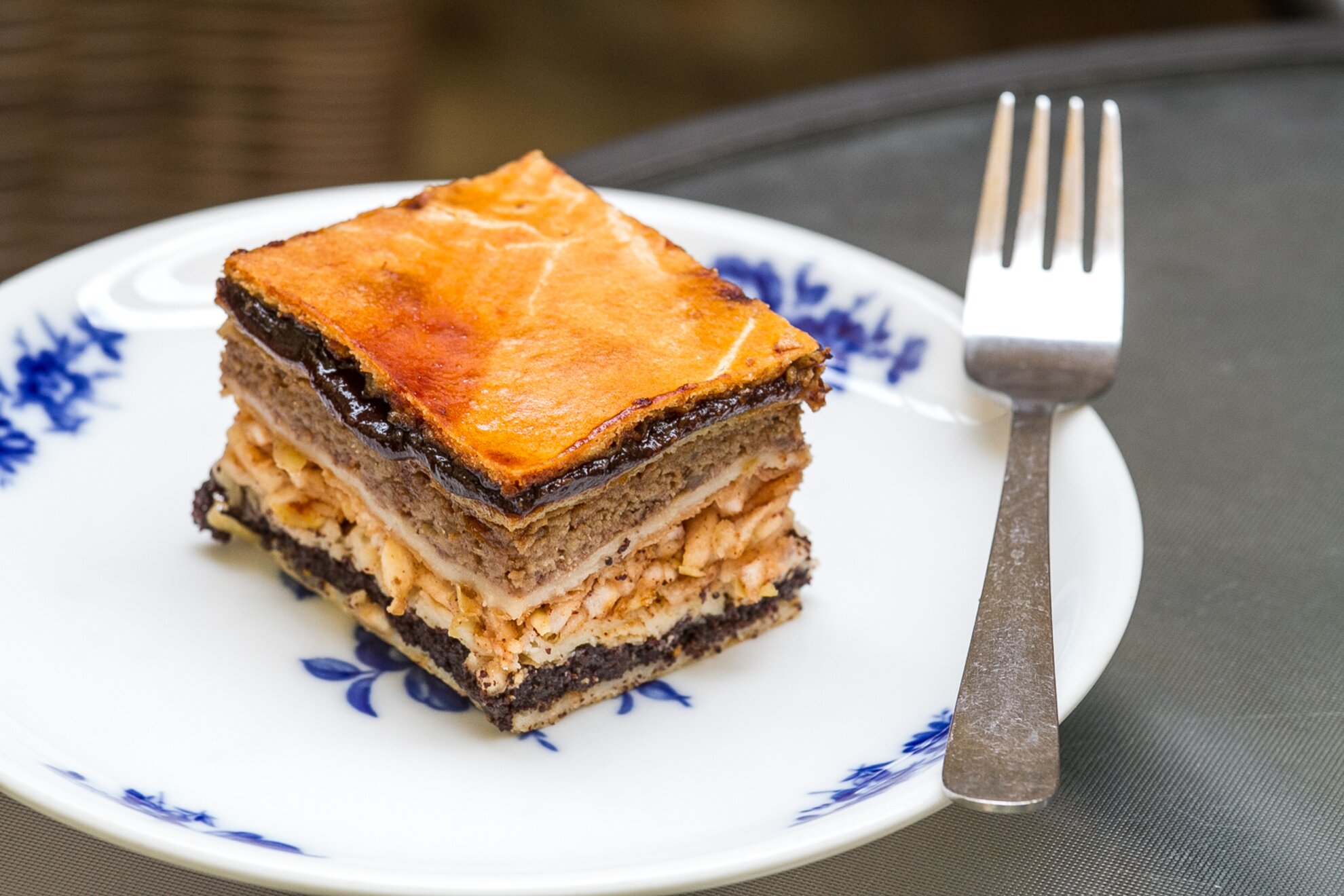
The cuckoo in the nest – no-one can ever quite prove that this cousin of béles pastry and strudel, flódni, was born in Budapest at the turn of the last century. But let’s see what we can find out. The word flódni has a good chance of being carried over from the German fladen, a flatbread, into the Yiddish language. In the early Middle Ages, a certain cheese flatbread was mainly consumed by Jews living in German- and French-speaking areas, but its popularity declined and then disappeared. Thus, it is unlikely to be closely related to today’s flódni, especially if we assume that before the end of the 19th century, it would not have appeared in the Jewish cookbooks of any country where Yiddish was spoken.
The flódni we know today – with apples, walnuts, poppies and plum jam – first appeared in Hungarian Jewish cookbooks at the turn of the 20th century. According to legend, it was a real Yiddish mama from Pest who first prepared all this wonderful fruit into a close relation to strudel and pie. It still has a prominent place in Budapest’s gastronomic canon, so it can be considered a real Jewish-Pest cake from Pest.
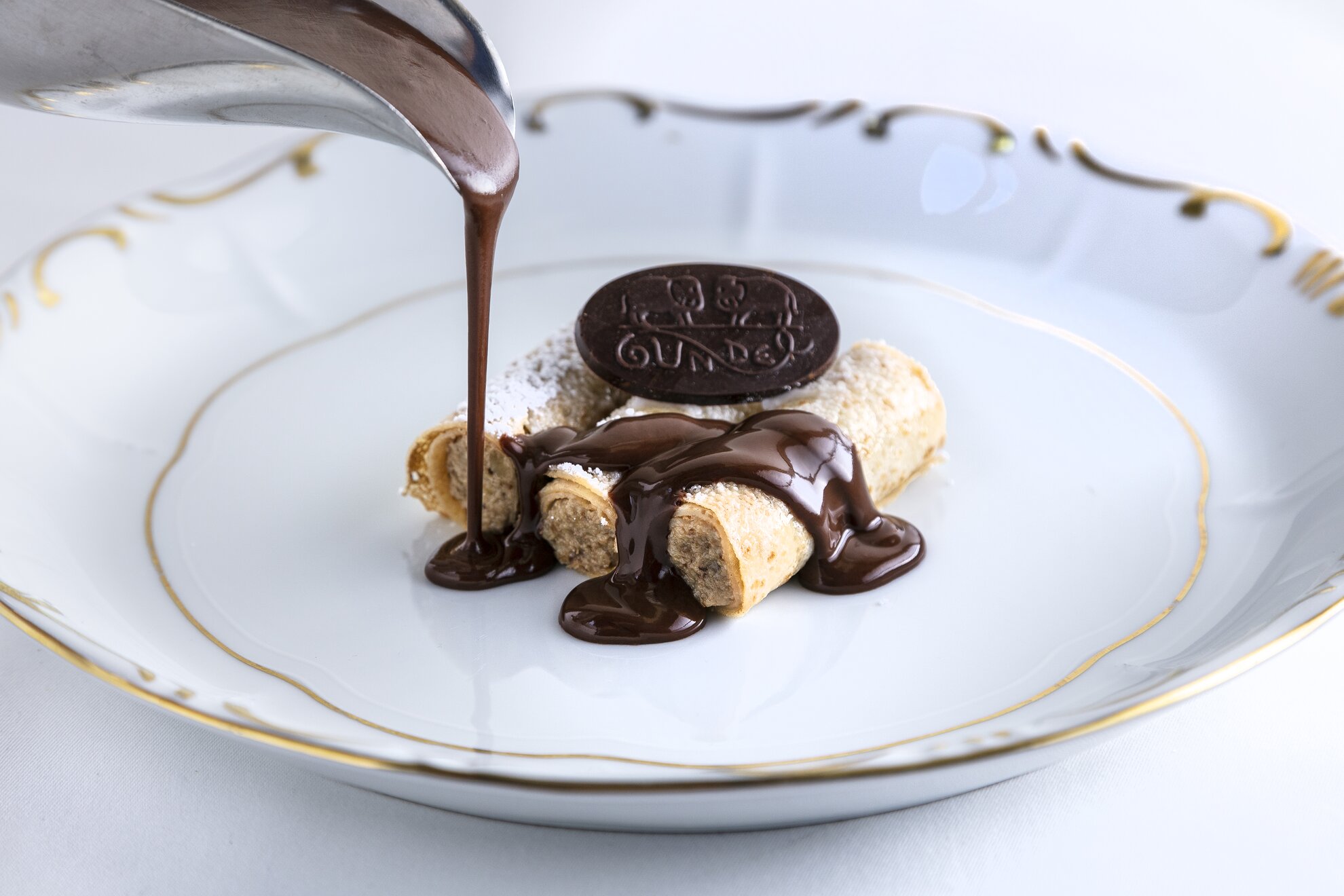
Dozens of recipes could be extracted from the Gundel cookbook on the assumption that they were created in Budapest – but from the menu of the city’s most iconic restaurant we have only selected those with the most interesting origins. Gundel pancakes are well-known to anyone who visits Hungary, and most sample this creamy nut dessert with chocolate sauce. Precisely because of its great popularity, it can also be found at many restaurants of lower quality – with expected results.
Few know that this otherwise flawless recipe belonged to Márai’s wife, Ilona Matzner, ‘Lola’. After the first presentation of one of Márai’s pieces, the banquet was held at Gundel, and Lola made chocolate pancakes filled with walnuts, candied orange and raisins. Károly Gundel liked the dessert so much that he asked for the recipe and put it on the menu. It remained there until 1948 when Márai emigrated, Gundel was nationalised, and the famous dessert could not remain in the name of a bourgeois gastronome, so it became the Gundel pancake.
A favourite of the Socialist era, when everyone knew that it was forbidden to be ordered in a restaurant. This was, of course, a huge mistake – but this dish made for the 1958 World’s Fair in Brussels was tarnished for decades before a number of restaurants were happy to reinvent it, have fun with it and put it back on the menu made from quality ingredients, prepared with care.
For a recipe created in Budapest and then served in Belgium, it would be foolish to think that it hadn’t existed before 1958, as it is so typical of Hungarian gastronomy that it aroused suspicion – meat-stuffed pancakes were popular before, they just weren’t called Hortobágy.
We don’t even have to go very far, not even 20 years back in time: Andrea Lemhényi Dávid Kollmanné’s Textbook of Practical Cooking Based around 100 Lunches from 1939 contains the recipe for veal-stew pancakes. Moreover, if we want to go back even further, we also find a pancake recipe stuffed with paprika chicken in 1909’s Fashion Newspaper Cookbook.
So, even if it didn’t make its debut in Brussels, the predecessor of Hortobágy was first created in Budapest!
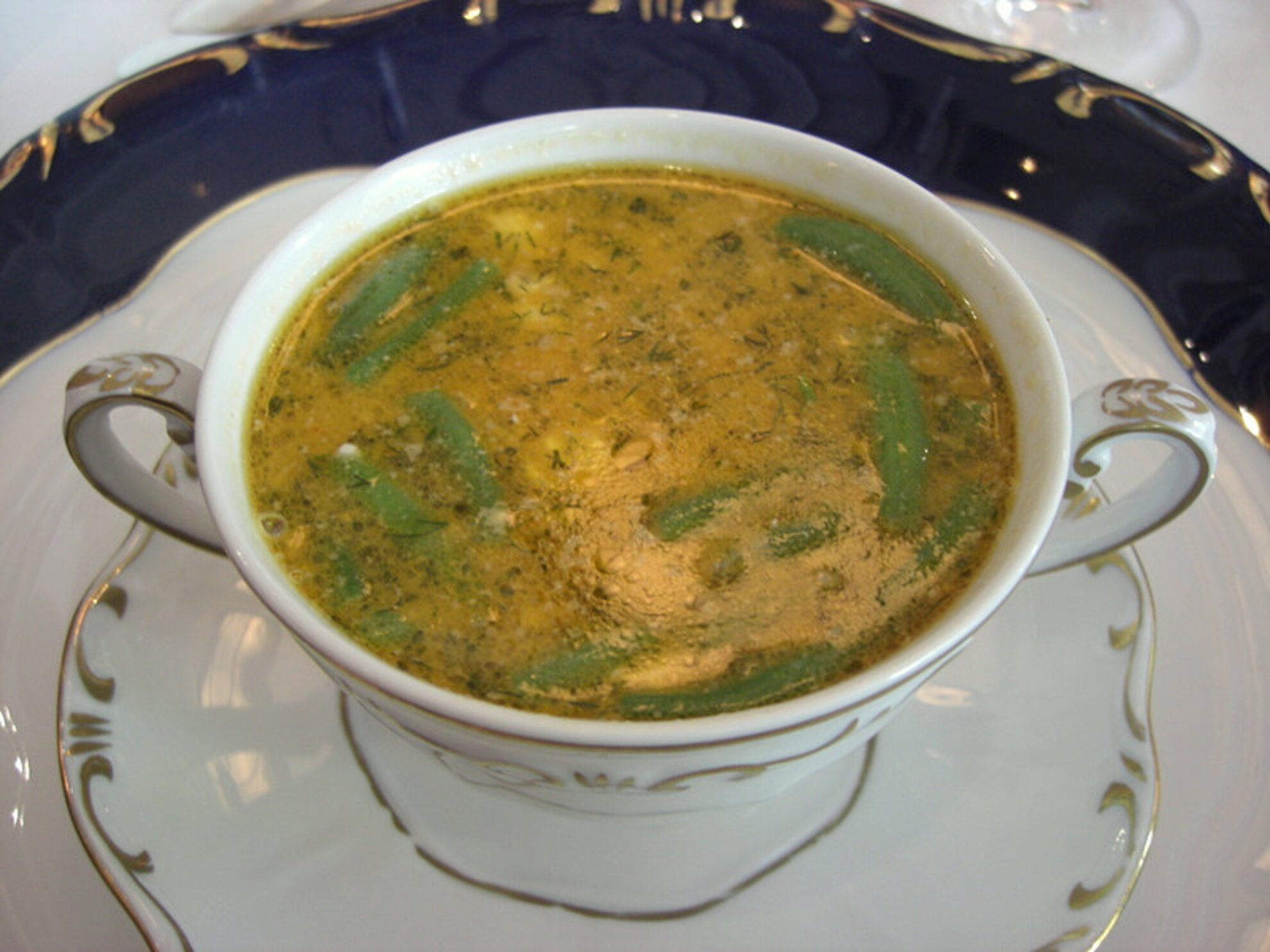
Palóc soup is considered by many to be a regional dish, although it has little to do with the northern Hungarian region of the same name. It is true that potatoes, mutton and dill are typical of that region, but this dense, substantial soup was not born there, but in Budapest. Like the Gundel pancake, it can be linked to the same establishment, although it was first made a generation earlier and not in a restaurant next to the Zoo. János Gundel rented the Archduke István’s hotel in 1889 and within a few years it was the talk of the town. Public dignitaries, politicians and famous writers of the day were frequent guests – including novelist Kálmán Mikszáth, famous for his appetite.
Gundel was such an admirer of the ‘Great Palóc’ that he not only named a hotel suite after it, but also invented a selection of dishes, each of which could be linked to a work by Mikszáth. It would be interesting to know which ones were on it, but unfortunately this has been lost in the mists of time. What is certain is that Palóc soup made its debut here for the first time. Given the disappearance of the other recipes, it’s no surprise that Palóc soup was forgotten about for years. Later, it reappeared in the Gourmet Master Elek Magyar cookbook, thus bringing it back into the culinary consciousness of the Hungarian public.
Named after a well-known actor of the late 1800s, Újházy chicken soup throws up several riddles. First of all, how it should be written. The actor was born Újházi with an ‘i’ – this is how his contemporaries wrote about him, and this is even what is found on his gravestone. Although several times in his life he wrote his own name with a y, Újházi is still the authentic version.
Another big question about the soup is whether it was originally made from chicken or rooster. Újházi himself did not leave us with the recipe, we can only rely on his contemporaries. According to writer and gastronome Gyula Krúdy, at the Wampetics, which first popularised the soup, it was made from chicken, but novelist Zsigmond Móricz, who was a good friend of the actor, mentions roosters in several places. We’ll probably never know what the truth is, but that way, anyone can make it as they wish. What is certain, however, is that Újházi’s soup, which is cooked with great enthusiasm by anyone familiar with gastronomy, was first served at Wampetics in the City Park.
Ferenc Wampetics had been renting a restaurant next to Budapest Zoo since 1888, which was at least as well-known in its day as Gundel, which opened in the same building 20 years later. The soup dates back to the 19th century. By the late 1880s, early 1890s, it was already on the Wampetics menu, as a kind of lightweight counterpoint to the thick beef broth served with heavy marrow bone.
